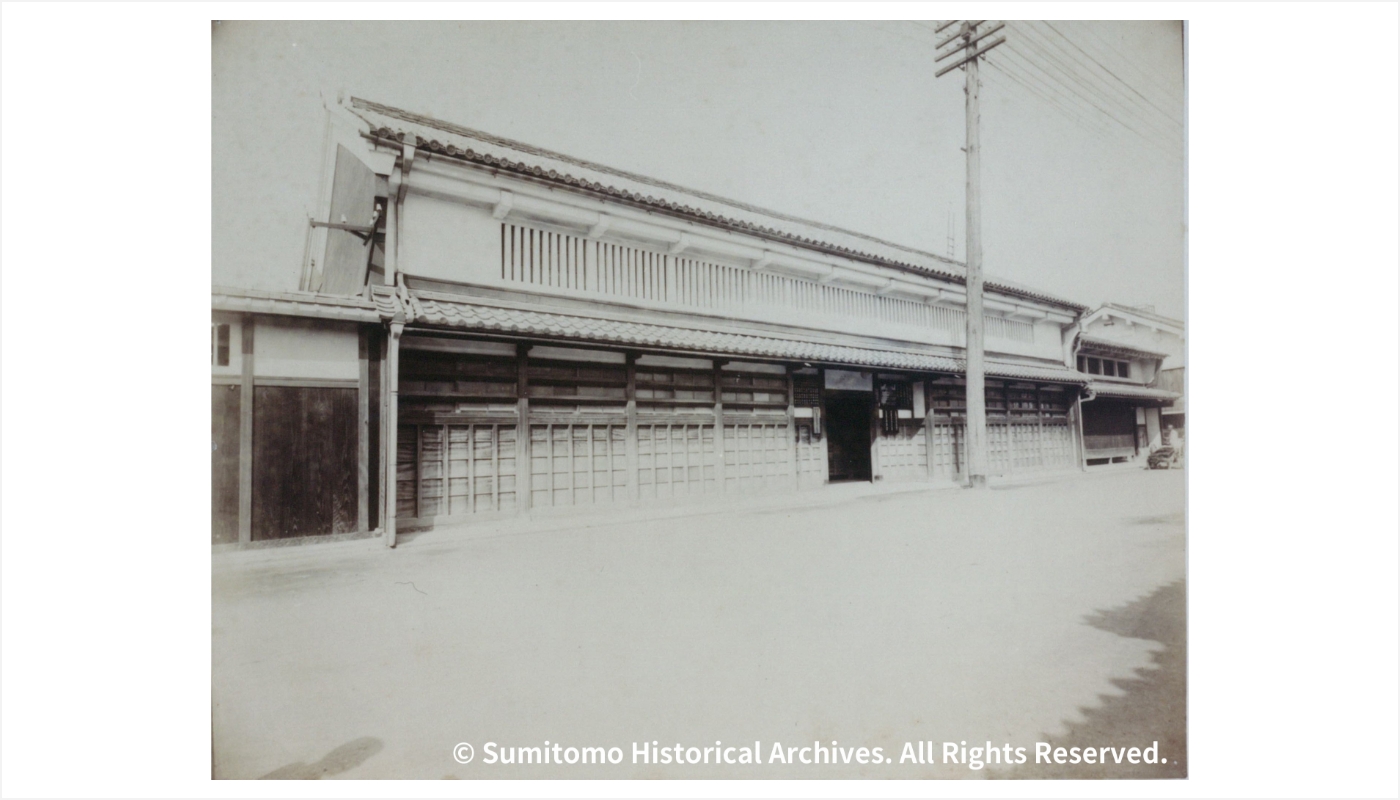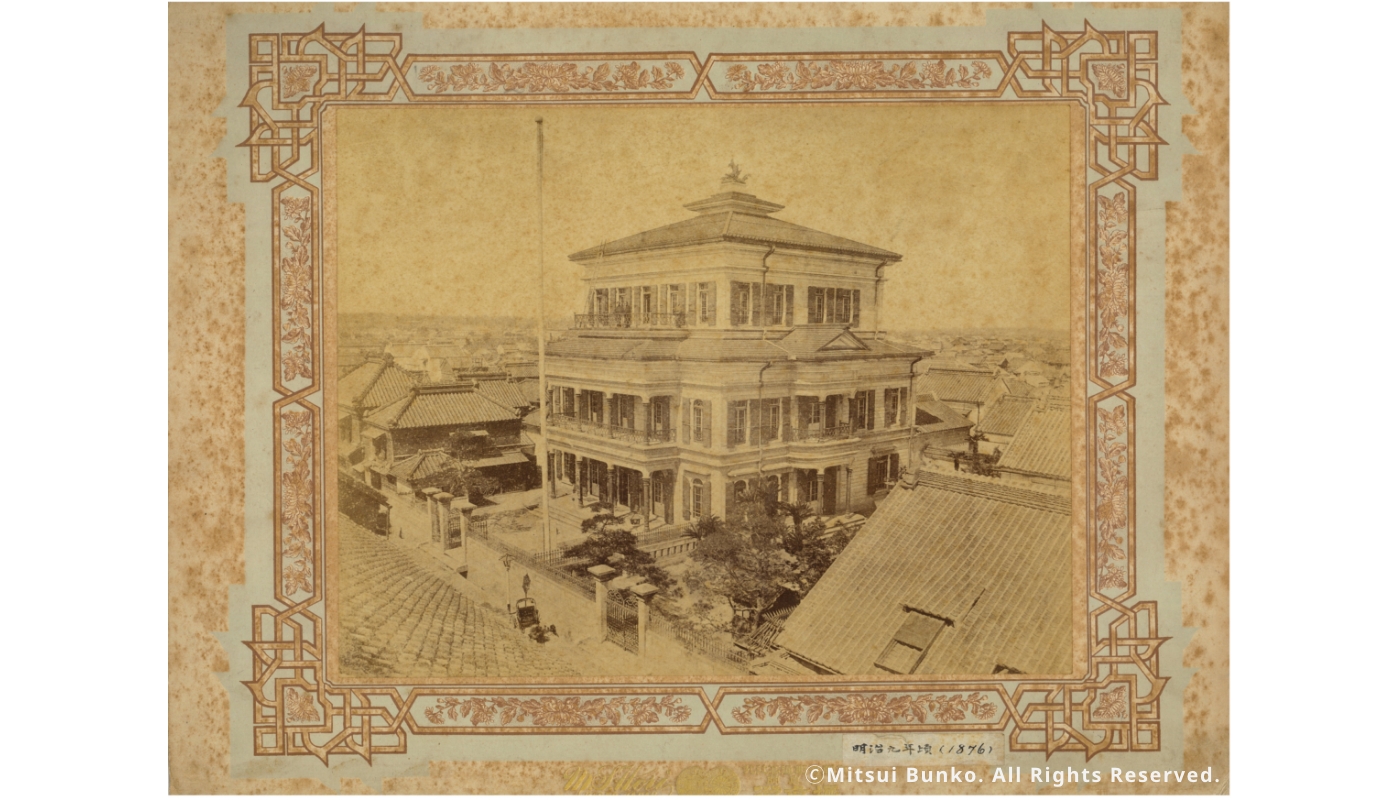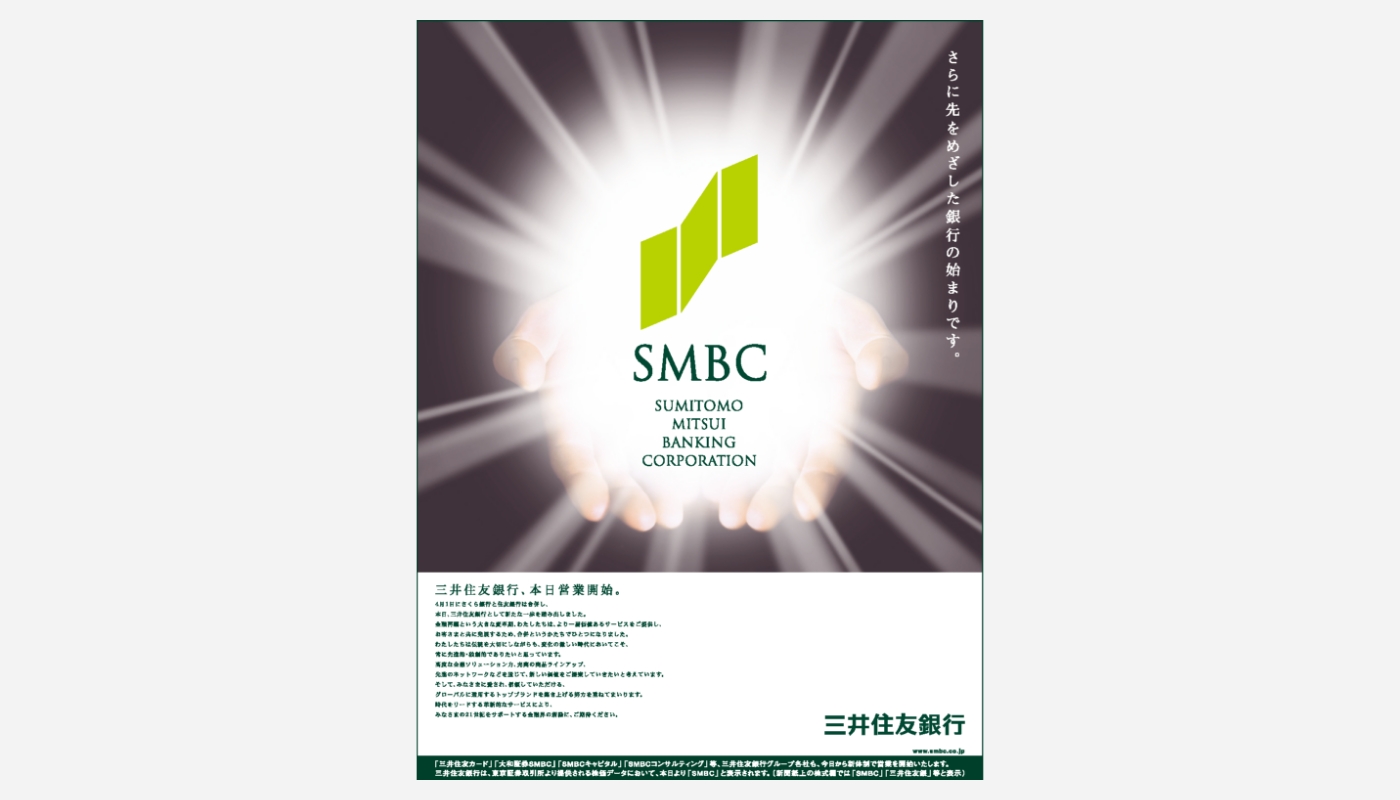
Sumitomo Mitsui
Banking Corporation
January 1, 2022


A core member bank of SMBC Group. Leads group-wide complex financial services provided to customers in and outside of Japan, including 43 million retail customers (group total) and 80 thousand corporate borrowers (SMBC only)
Profile of Sumitomo Mitsui Banking Corporation
| Company Name | Sumitomo Mitsui Banking Corporation |
|---|---|
| Business Description | Banking |
| Head Office | 1-1-2, Marunouchi, Chiyoda-ku, Tokyo, Japan |
| President and CEO | Makoto Takashima |
| Website | Sumitomo Mitsui Banking Corporation |
History of Sumitomo Mitsui Banking Corporation
Sumitomo Mitsui Banking Corporation (SMBC) was established in April 2001 through the merger of Sumitomo Bank and Sakura Bank. Sakura Bank was created in 1990 as a result of the merger of Mitsui Bank and Taiyo Kobe Bank. SMBC boasts a long history, as it can be traced back to the founding of Mitsui Bank in 1876 and Sumitomo Bank in 1895. Also, the business origins of Sumitomo and Mitsui date as far back as 400 years ago.
Sumitomo Bank
The Sumitomo family arose from a copper refining business in Kyoto, which Riemon Soga— brother-in-law of Masatomo Sumitomo, who was the first head of the Sumitomo family—established in 1590. While expanding the copper mine development business centering on the Besshi Copper Mine, the family engaged in a money-exchange service during the 1660s. The company’s lending business grew steadily and was partly backed by capital demand related to a boom of company establishments. The Sumitomo family established Sumitomo Bank in November 1895. Driven by the buoyant economic recovery after World War I, the bank expanded operations rapidly while increasing branches in Japan.


From the late 1920s, many banks were merged and integrated based on government policies. Sumitomo Bank merged with Hannan Bank and Ikeda Jitsugyo Bank in July 1945, in accordance with the government’s request. In October 1948, Sumitomo Bank was forced to be renamed Osaka Bank temporarily as part of the government-led initiatives to dissolve the zaibatsu (business conglomerates), before being restored to its original name in December 1952.
After World War II, as the Japanese economy grew rapidly, Sumitomo Bank increased its deposit and loan businesses steadily in response to strong demand from industries. Sumitomo Bank often earned the top position among city banks in terms of revenue. The bank was, however, inferior to other top ranked city banks in terms of branch network in the Tokyo metropolitan area. To address this concern, the bank merged with Heiwa Sogo Bank, a high-level mutual bank located in Tokyo, in October 1986.
In the face of financial difficulties that resulted from the collapse of the bubble economy, Sumitomo Bank posted a loss in the fiscal year 1994, becoming the first city bank to do so, and wrote off non-performing loans. In 1997, a leading securities firm went under, creating instability in the financial market and prompting many financial institutions to pursue partnerships and mergers. In this context, in October 1999, Sumitomo Bank and Sakura Bank announced that they had agreed on a full partnership and future integration plan, and the two banks merged in April 2001.
Mitsui Bank
The Mitsui family’s original business was founded by Takatoshi Mitsui, who in 1673 opened the Mitsui Echigo-ya Gofukuten (kimono dealer) in Kyoto and Edo (currently Tokyo). As the business of Echigo-ya was growing, related money-exchange transactions increased, which encouraged Takatoshi Mitsui to launch a money-exchange business in Edo in 1683. Mitsui’s customers included the central government, which asked the company to handle public money, thus developing its businesses, and building a public reputation. In July 1876, based on its solid businesses and the reputation it had built, Mitsui family established Mitsui Bank, Japan’s first private bank. The bank later became a core company of the Mitsui Group to support the group’s development as its financial arm.


In April 1943, Mitsui Bank merged with Dai-Ichi Bank to form Teikoku Bank, which was followed by the merger with Jugo Bank in August 1944. However, Teikoku Bank had difficulties in internal integration of former organizations, partially due to its establishment during wartime. As a result, the bank separated from Dai-Ichi Bank in October 1948 after the war, accepting the request from its former employees.
Teikoku Bank was re-established with its name restored to Mitsui Bank in January 1954. It began to grow in scale through mergers and acquisitions, including the merger with Toto Bank in April 1968, with the aim of meeting burgeoning capital demand from large corporations while accommodating the needs of retail and small corporate customers. Nonetheless, the bank suffered from capital shortages resulting from the limited number of branches, which was caused by its prewar management policy oriented to reduced branch networks and the separation of Dai-Ichi Bank. In order to deal with this issue while also boosting the capacity to satisfy capital adequacy requirements, Mitsui Bank merged with Taiyo Kobe Bank in April 1990 to form Mitsui Taiyo Kobe Bank.
Taiyo Kobe Bank
Taiyo Kobe Bank was formed in October 1973 through the merger of Kobe Bank and Taiyo Bank. Kobe Bank was created in December 1936 by merging seven major banks in Hyogo Prefecture. Although Kobe Bank was small as a city bank in terms of total assets, Kobe Bank developed its market base by absorbing other local banks to win the largest share in the region.
Taiyo Bank was established in December 1940, originally as Dai Nihon Mujin, because of regional initiatives implemented to integrate mujin companies in Tokyo. (Mujin was a type of common people’s finance for mutual aid, which was developed over the ages in ancient Japan.) Dai Nihon Mujin grew larger in scale through merging with or acquiring business rights from other companies operating in accordance with the wartime integration policies. The company was renamed Nihon Mujin in April 1948, then Nihon Sogo Bank in October 1951, before converting its status to an ordinary bank in December 1968. The re-established entity was classified as a city bank and changed its name to Taiyo Bank.
Kobe Bank, based in western Japan, and Taiyo Bank in eastern Japan, announced an equal-footed merger in October 1973, looking at a geographical complementarity effect. The resultant Taiyo Kobe Bank developed into a mid-level city bank with a strong focus on retail business. Subsequently, the bank began to face a series of issues, such as inefficiency due to swelling branch networks and weakness in services for large businesses and international operations, and decided to merge with Mitsui Bank, seeking to address these issues. The integration was carried out in April 1990.
Sakura Bank
Mitsui Bank and Taiyo Kobe Bank merged into Mitsui Taiyo Kobe Bank, which changed its name to Sakura Bank in April 1992. The establishment made a new start as a top-ranked city bank. The bank was looking to increase its earning capacity. Unfortunately, however, the bubble economy collapsed at almost the same time as when the integration was completed. As a result, the bank faced the severe challenge of non-performing loans before leveraging the effects of the integration, which led Sakura Bank to the decision to merge with Sumitomo Bank.
Sumitomo Mitsui Banking Corporation
SMBC was established in April 2001 through the merger of Sumitomo Bank and Sakura Bank. In December 2002, SMBC established the holding company Sumitomo Mitsui Financial Group, Inc. (SMFG) to build a group management structure led by SMFG. The bank reduced non-performing loans through bolstering the earning capacity and reducing costs while increasing the capital adequacy ratio and paid off the public funds in October 2006.


SMBC weathered the global financial crisis in 2008. While improving its business model based on the viewpoint of customers, SMBC is pursuing various strategies with a focus on partnership and collaboration with SMBC Nikko Securities, SMBC Trust Bank, and other members of the growing Group; the acquisition of an aircraft leasing business and ownership of BTPN (Indonesian bank), and other global business development initiatives; and the creation of new businesses in response to needs related to digital transactions.